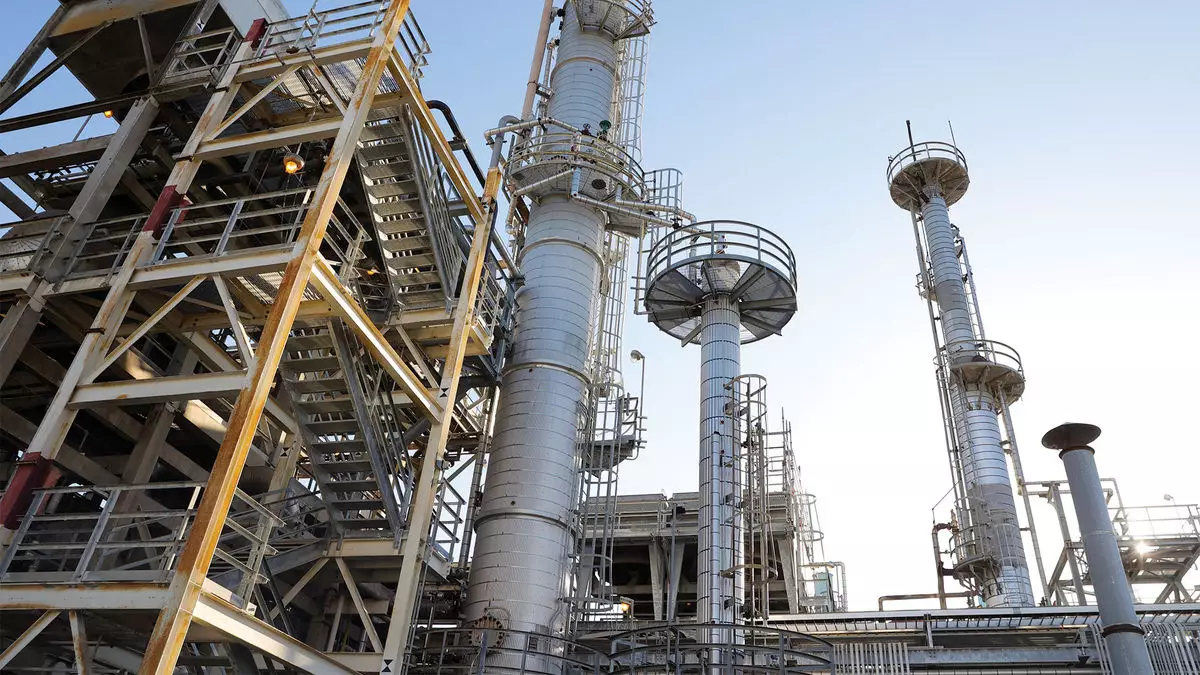The production of sustainable aviation fuel (SAF) has gained considerable momentum in recent years, particularly influenced by the Biden administration’s supportive policies. However, past actions from the Trump administration raise questions about the future trajectory of this growing industry. As both time and administration shifts unfold, stakeholders are left scrambling for clarity amid a complex web of incentives and regulatory changes.
Current Landscape of SAF Production
The last few years have seen a surge in SAF production, facilitated by government incentives and industry commitments. In 2022, U.S. SAF production reached 7.9 million gallons, increasing to 14 million gallons in 2023, and hitting an impressive 38.7 million gallons a year later. This growth trajectory is commendable, yet it falls significantly short of the Biden administration’s ambitious goal of achieving 3 billion gallons annually by 2030—targeting a 10% share of the national aviation fuel market.
The International Air Transport Association (IATA) estimates that SAF will play a pivotal role in the aviation industry’s fight against climate change, potentially responsible for up to 65% of needed emissions reductions as airlines aim for net-zero emissions by 2050. With production technology evolving rapidly, the upcoming launches and capacity expansions by industry leaders such as Phillips 66 and Valero signal promising advances. However, these bright prospects confront an uncertain regulatory environment following the leadership change in 2024.
The Role of Government Incentives
Government incentives have been crucial in stimulating SAF production. The Inflation Reduction Act, for example, introduced a tax credit system that provided between $1.25 and $1.75 per gallon for SAF purchases, depending on emissions reductions associated with the fuel. Nevertheless, this program is set to expire at the end of 2024, creating a critical juncture for the industry’s sustainability.
Upcoming changes indicate the introduction of a new tax credit framework that will allocate funds to production rather than purchase, ranging from 1 cent to $1.75 per gallon until 2027. The transition poses challenges, particularly as regulatory compliance currently faces delays due to executive orders that have put a freeze on developing new regulations. This uncertainty around the future direction of subsidies and regulations can hinder investor confidence and disrupt production plans in the SAF sphere.
In an unpredictable political tapestry, voices from both industry and advocacy circles express concerns about the current administration’s reliability in supporting SAF initiatives. Fayaz Hussain, an editor for SAF Investor, aptly describes the unpredictability stemming from the Trump administration’s historical policies towards environmental projects. The apprehension is palpable: stakeholders worry that instead of building a supportive framework, the new administration may scrutinize and potentially dismantle existing SAF initiatives.
Such political volatility could discourage investment and slow down production as companies calibrate their operations in anticipation of potential shifts in government stance. The significance of tax credits in driving up demand amongst airlines heavily reliant on more affordable fuel sources cannot be overstated. Without a clear commitment to sustaining these credits, the viability of SAF as a mainstream aviation fuel source may be jeopardized.
While the tactical moves of the new administration may present challenges, proponents of SAF hold hope in state-level initiatives. Several states—including Washington, Illinois, and Minnesota—have introduced their own incentives to support sustainable fuel development. These localized efforts can provide a safety net for innovation and production even when federal support falters.
Experts argue that building a comprehensive strategy across states could effectively fortify the SAF sector. Alison Graab, executive director of the SAF Coalition, highlights that SAF not only aligns with job creation goals but also taps into agricultural markets by leveraging feedstocks such as corn for ethanol production. This capacity to enhance job opportunities while adhering to sustainability objectives aligns with broader agricultural policies that enjoy bipartisan support.
The path towards a robust SAF production industry serves as a litmus test for the intersection of environmental policy and energy production within a changing political landscape. While the industry finds itself grappling with uncertainty, the drive for innovation remains intact. Continued dialogue between industry leaders and policymakers, combined with steadfast support from proactive states, can help stabilize the SAF sector.
Ultimately, achieving the ambitious targets for sustainable aviation fuel will necessitate cooperation, adaptable policies, and a commitment to long-term investment. The road ahead may be rocky, but with the combined efforts of stakeholders committed to sustainability, the goal of a smarter, greener aviation sector remains well within reach.

